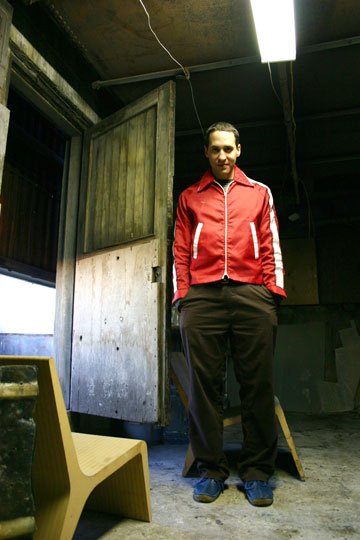
Things like the weather or people’s moods have a tremendous impact,” says Arbel. “Every single time craftspeople makes a piece, it’s substantially different from the previous piece and the next one made. Each light, a distorted glass sphere housing a smaller milk-glass diffuser, was unique.
#Omer arbel series#
In 2013, he occupied the main hall of London’s Victoria & Albert Museum with a tangled, 100-foot-tall chandelier made from 280 of Bocci’s 28 Series lights. Commercial success, however, hasn’t slowed Arbel’s creativity. Its fixtures are sold in high-end showrooms and hang in the lobbies of Ritz-Carltons and Shangri-Las and above dining tables and kitchen islands in cities everywhere. Bocci is one of the most successful lighting manufacturers on the planet. To consumers, whether Bocci’s lights are functional or not appears beside the point. It’s different than furniture or art or architecture in that there is this moment where your spirit is engaged in some mysterious way,” says the Jerusalem-born, Vancouver-raised designer. “There is a kind of allusion to human emotion or metaphysical or even existential conditions that lighting evokes in us as humans. We’re hoping to use light to discover what’s happening inside the piece, not to make enough light for you to cook with.”Īrbel is one of today’s great sculptors of light precisely because he’s fixated not on his fixtures’ functions, but on light’s more poetic qualities. But for Arbel? “Our consideration is that are not a source of lighting. While Modernism first fell out of favour nearly half a century ago, the idea that a successful design is one that fulfills a purpose remains. A light, as it goes, should illuminate darkness. Design has been obsessed with functionality ever since the late 19th century, when architect Louis Sullivan wrote the famous (and oft-misquoted) Modernist maxim: “form ever follows function” - the idea being that a building or object’s design should communicate its purpose. “That’s a common complaint they’re not good lights,” he says, with a laugh on Zoom one March morning from Vancouver. His conceptual approach, now fueled by an infrastructure for prototyping, fine craft, manufacturing and distribution, has given birth to a collection of conceptually driven lighting, furniture, electrical accessories and objects, which have since gained significant presence and impact within the design community.I find myself momentarily surprised when Omer Arbel, co-founder and creative director of Bocci, readily admits that his lights, beautiful hand-blown glass orbs, don’t produce much light.

In 2005, Arbel became Bocci’s creative director. Conversely, critics have noted that the practice’s built works appear to be inspired by an obsession with the object, the possibilities implicit in the process of making, and the intrinsic quality of materials. It has been said of Arbel’s practice that its industrial design works, in both limited edition and mass produced formats, appear to be motivated by larger scale concepts which can only be considered architectural. After apprenticeships at Miralles Tagliabue Architects and Patkau Architects, in 2005, Omer Arbel founded a multidisciplinary design studio focused on blurring the boundaries between the fields of building, industrial design, and materials research. London Design Festival.- 14-22 September 2013. Victoria and Albert Museum - Cromwell Road, London SW7 2R

‘28’ pendants result from a complex glass blowing technique whereby air pressure is intermittently introduced into and then removed from a glass matrix which is intermittently heated and then rapidly cooled.The result is a distorted spherical shape with a composed collection of inner shapes, one of which is made of opaque milk glass and houses a light source.ĭate.- From 14th September to 21st November 2013. Instead of designing form itself, here the intent was to design a system that haphazardly yields form, almost as a byproduct. He explains,Ģ8 Series is an exploration of a fabrication process which is part of our quest for specificity. The installation is made up of 280 individual 28 Series glass pendant lamps, each of which is handmade at design brand Bocci’s glass factory in Canada using a fabrication process developed by Arbel.

Hung from the Cupola, the highest point of the building, the installation spans the vast height of the Museum, cascading more than 30 metres through the centre of the Ceramics Galleries, past the coffered ceiling beneath and finally appearing above the main doorway as visitors enter the museum. Here you are greeted by the 28.280 custom-made chandelier by Canada-based designer Omer Arbel. Enter through the Grand entrance of the V&A and look up.


 0 kommentar(er)
0 kommentar(er)
